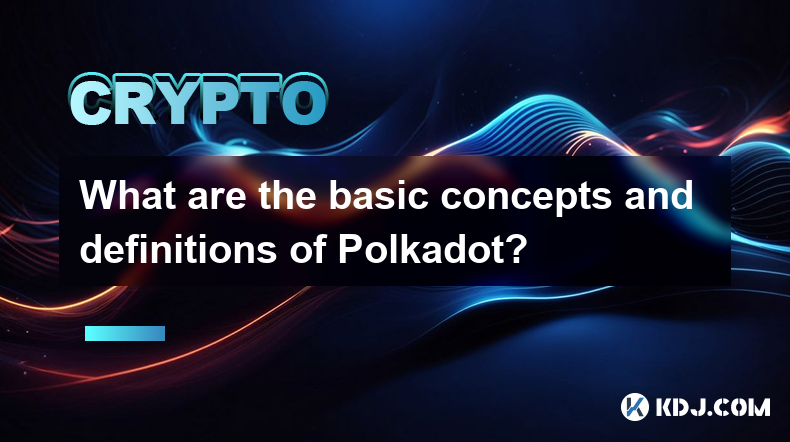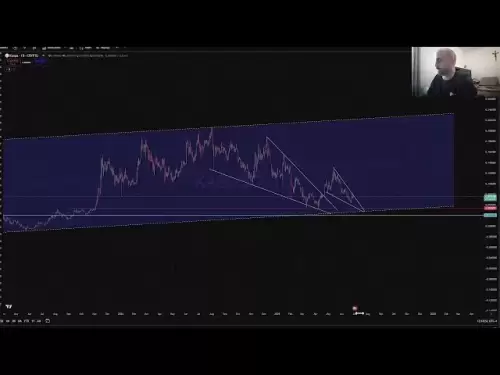-
 Bitcoin
Bitcoin $107,352.1067
0.28% -
 Ethereum
Ethereum $2,429.3531
-0.90% -
 Tether USDt
Tether USDt $1.0001
-0.02% -
 XRP
XRP $2.1894
4.62% -
 BNB
BNB $646.7968
0.36% -
 Solana
Solana $147.4290
4.03% -
 USDC
USDC $0.9998
-0.02% -
 TRON
TRON $0.2756
1.52% -
 Dogecoin
Dogecoin $0.1630
1.14% -
 Cardano
Cardano $0.5612
1.18% -
 Hyperliquid
Hyperliquid $37.0580
-0.05% -
 Bitcoin Cash
Bitcoin Cash $496.9410
-0.09% -
 Sui
Sui $2.7318
3.19% -
 Chainlink
Chainlink $13.1503
0.58% -
 UNUS SED LEO
UNUS SED LEO $9.0766
0.55% -
 Avalanche
Avalanche $17.7220
1.46% -
 Stellar
Stellar $0.2380
1.52% -
 Toncoin
Toncoin $2.8439
0.38% -
 Shiba Inu
Shiba Inu $0.0...01143
1.84% -
 Litecoin
Litecoin $85.8053
1.47% -
 Hedera
Hedera $0.1483
2.70% -
 Monero
Monero $314.3240
2.12% -
 Bitget Token
Bitget Token $4.6725
0.77% -
 Dai
Dai $1.0000
0.00% -
 Polkadot
Polkadot $3.3555
1.28% -
 Ethena USDe
Ethena USDe $1.0001
0.02% -
 Uniswap
Uniswap $7.0890
2.64% -
 Pi
Pi $0.5355
-3.40% -
 Pepe
Pepe $0.0...09393
1.06% -
 Aave
Aave $256.8136
-1.90%
What are the basic concepts and definitions of Polkadot?
Polkadot's multi-chain architecture, using relay chains and parachains, enables interoperability between blockchains. DOT secures the network via staking, governance, and facilitates parachain development using the Substrate framework.
Mar 11, 2025 at 06:31 am

Key Points:
- Polkadot's core concept revolves around a multi-chain architecture designed for interoperability.
- It utilizes relay chains and parachains to facilitate communication and transaction transfer between different blockchains.
- Understanding "nominators," "validators," and "collators" is crucial to grasping Polkadot's consensus mechanism.
- DOT, Polkadot's native token, is essential for staking, governance, and network security.
- The Substrate framework allows developers to build and deploy custom blockchains compatible with the Polkadot ecosystem.
What are the basic concepts and definitions of Polkadot?
Polkadot is a next-generation blockchain network designed to solve the problem of blockchain interoperability. Unlike many blockchains that operate in isolation, Polkadot aims to connect multiple blockchains, allowing them to communicate and share information seamlessly. This interoperability is a key differentiator, enabling a more efficient and interconnected cryptocurrency ecosystem. The project was founded by Gavin Wood, a co-founder of Ethereum.
The core concept behind Polkadot's architecture is the idea of a multi-chain system. This system consists of a central relay chain and numerous parallel chains known as parachains. The relay chain acts as the central backbone, connecting all the parachains and ensuring secure communication between them. This allows for cross-chain transactions and data transfer, something largely absent in other blockchain ecosystems.
Understanding Polkadot's consensus mechanism requires understanding several key roles. Validators are responsible for verifying and adding new blocks to the relay chain. They are selected based on the amount of DOT they stake. Nominators, on the other hand, choose validators they trust and delegate their DOT to them. This process ensures a decentralized and secure network. Collators, specific to parachains, collect and organize transactions before submitting them to the relay chain for validation.
DOT, Polkadot's native cryptocurrency, serves several crucial functions within the ecosystem. It's primarily used for staking, allowing users to secure the network and earn rewards. Additionally, DOT holders can participate in on-chain governance, influencing the direction and development of the Polkadot network. The token's value is directly tied to the network's security and overall success.
The Substrate framework is a vital component of Polkadot's ecosystem. This open-source framework provides developers with the tools to easily build and deploy their own custom blockchains that are interoperable with the Polkadot network. This enables a thriving ecosystem of decentralized applications (dApps) and specialized blockchains, each catering to unique needs and use cases. This significantly reduces the barrier to entry for blockchain development.
Polkadot's architecture utilizes a unique approach to security. The relay chain, secured by a Proof-of-Stake (PoS) consensus mechanism, provides security for all connected parachains. This means that even if a parachain is compromised, the entire Polkadot network is not necessarily at risk. This layered security model enhances the overall resilience and robustness of the system.
One of the key features of Polkadot is its scalability. By enabling parallel processing across multiple parachains, Polkadot can handle a significantly higher transaction throughput compared to many single-chain blockchains. This scalability is crucial for handling the increasing demand for decentralized applications and services.
Polkadot's governance model is designed to be community-driven. DOT holders have the power to vote on proposals that affect the network's development and future direction. This allows for a decentralized and transparent governance process, ensuring that the network evolves in a way that reflects the needs and desires of its users. This participation is key to the long-term success of the project.
The interoperability features of Polkadot are achieved through a sophisticated cross-chain messaging system. This system enables seamless communication and data transfer between different blockchains connected to the Polkadot relay chain. This facilitates the creation of cross-chain applications and bridges the gap between isolated blockchain ecosystems.
Frequently Asked Questions:
Q: What is the difference between Polkadot and Ethereum?
A: While both are blockchain platforms, Polkadot focuses on interoperability, connecting multiple blockchains, while Ethereum primarily focuses on smart contracts and decentralized applications within its own single chain. Polkadot aims to be a multi-chain network, offering a more interconnected ecosystem.
Q: How does staking work in Polkadot?
A: Users stake their DOT tokens to become nominators or validators. Nominators choose validators to support, and validators secure the network by verifying transactions. Both earn rewards based on their contributions.
Q: What are parachains and their purpose?
A: Parachains are independent blockchains connected to the Polkadot relay chain. They offer specialized functionalities and benefit from the security and interoperability provided by the relay chain. They are essentially independent blockchains within a larger ecosystem.
Q: What is the Substrate framework used for?
A: Substrate is a development framework that simplifies the process of creating custom blockchains compatible with the Polkadot ecosystem. This facilitates the creation of specialized blockchains and dApps.
Q: What are the risks associated with investing in Polkadot?
A: Like all cryptocurrencies, Polkadot investments are subject to market volatility and technological risks. The success of the Polkadot ecosystem depends on various factors, including community adoption and technological advancements. There are always inherent risks in the cryptocurrency market.
Disclaimer:info@kdj.com
The information provided is not trading advice. kdj.com does not assume any responsibility for any investments made based on the information provided in this article. Cryptocurrencies are highly volatile and it is highly recommended that you invest with caution after thorough research!
If you believe that the content used on this website infringes your copyright, please contact us immediately (info@kdj.com) and we will delete it promptly.
- RUVI Token Soars: Can It Eclipse Cardano's Forecast?
- 2025-06-29 02:30:12
- Meme Coin Mania: Can Little Pepe Outshine Shiba Inu and Dogecoin?
- 2025-06-29 02:30:12
- XRP Tokens: Navigating Financial Status and the Art of Buying In
- 2025-06-29 02:50:12
- Shiba Inu, Trump Coin, and the Crypto Bull Run: What's the Deal?
- 2025-06-29 03:50:12
- Coinbase on the 2025 List of Influential Companies: A Crypto Powerhouse?
- 2025-06-29 04:10:12
- Solana, Shiba Inu, and Pepe Coin: What's Hot and What's Not in the Crypto World
- 2025-06-29 03:55:13
Related knowledge

How to customize USDT TRC20 mining fees? Flexible adjustment tutorial
Jun 13,2025 at 01:42am
Understanding USDT TRC20 Mining FeesMining fees on the TRON (TRC20) network are essential for processing transactions. Unlike Bitcoin or Ethereum, where miners directly validate transactions, TRON uses a delegated proof-of-stake (DPoS) mechanism. However, users still need to pay bandwidth and energy fees, which are collectively referred to as 'mining fe...

USDT TRC20 transaction is stuck? Solution summary
Jun 14,2025 at 11:15pm
Understanding USDT TRC20 TransactionsWhen users mention that a USDT TRC20 transaction is stuck, they typically refer to a situation where the transfer of Tether (USDT) on the TRON blockchain has not been confirmed for an extended period. This issue may arise due to various reasons such as network congestion, insufficient transaction fees, or wallet-rela...

How to cancel USDT TRC20 unconfirmed transactions? Operation guide
Jun 13,2025 at 11:01pm
Understanding USDT TRC20 Unconfirmed TransactionsWhen dealing with USDT TRC20 transactions, it’s crucial to understand what an unconfirmed transaction means. An unconfirmed transaction is one that has been broadcasted to the blockchain network but hasn’t yet been included in a block. This typically occurs due to low transaction fees or network congestio...

How to check USDT TRC20 balance? Introduction to multiple query methods
Jun 21,2025 at 02:42am
Understanding USDT TRC20 and Its ImportanceUSDT (Tether) is one of the most widely used stablecoins in the cryptocurrency market. It exists on multiple blockchain networks, including TRC20, which operates on the Tron (TRX) network. Checking your USDT TRC20 balance accurately is crucial for users who hold or transact with this asset. Whether you're sendi...

What to do if USDT TRC20 transfers are congested? Speed up trading skills
Jun 13,2025 at 09:56am
Understanding USDT TRC20 Transfer CongestionWhen transferring USDT TRC20, users may occasionally experience delays or congestion. This typically occurs due to network overload on the TRON blockchain, which hosts the TRC20 version of Tether. Unlike the ERC20 variant (which runs on Ethereum), TRC20 transactions are generally faster and cheaper, but during...

The relationship between USDT TRC20 and TRON chain: technical background analysis
Jun 12,2025 at 01:28pm
What is USDT TRC20?USDT TRC20 refers to the Tether (USDT) token issued on the TRON blockchain using the TRC-20 standard. Unlike the more commonly known ERC-20 version of USDT (which runs on Ethereum), the TRC-20 variant leverages the TRON network's infrastructure for faster and cheaper transactions. The emergence of this version came as part of Tether’s...

How to customize USDT TRC20 mining fees? Flexible adjustment tutorial
Jun 13,2025 at 01:42am
Understanding USDT TRC20 Mining FeesMining fees on the TRON (TRC20) network are essential for processing transactions. Unlike Bitcoin or Ethereum, where miners directly validate transactions, TRON uses a delegated proof-of-stake (DPoS) mechanism. However, users still need to pay bandwidth and energy fees, which are collectively referred to as 'mining fe...

USDT TRC20 transaction is stuck? Solution summary
Jun 14,2025 at 11:15pm
Understanding USDT TRC20 TransactionsWhen users mention that a USDT TRC20 transaction is stuck, they typically refer to a situation where the transfer of Tether (USDT) on the TRON blockchain has not been confirmed for an extended period. This issue may arise due to various reasons such as network congestion, insufficient transaction fees, or wallet-rela...

How to cancel USDT TRC20 unconfirmed transactions? Operation guide
Jun 13,2025 at 11:01pm
Understanding USDT TRC20 Unconfirmed TransactionsWhen dealing with USDT TRC20 transactions, it’s crucial to understand what an unconfirmed transaction means. An unconfirmed transaction is one that has been broadcasted to the blockchain network but hasn’t yet been included in a block. This typically occurs due to low transaction fees or network congestio...

How to check USDT TRC20 balance? Introduction to multiple query methods
Jun 21,2025 at 02:42am
Understanding USDT TRC20 and Its ImportanceUSDT (Tether) is one of the most widely used stablecoins in the cryptocurrency market. It exists on multiple blockchain networks, including TRC20, which operates on the Tron (TRX) network. Checking your USDT TRC20 balance accurately is crucial for users who hold or transact with this asset. Whether you're sendi...

What to do if USDT TRC20 transfers are congested? Speed up trading skills
Jun 13,2025 at 09:56am
Understanding USDT TRC20 Transfer CongestionWhen transferring USDT TRC20, users may occasionally experience delays or congestion. This typically occurs due to network overload on the TRON blockchain, which hosts the TRC20 version of Tether. Unlike the ERC20 variant (which runs on Ethereum), TRC20 transactions are generally faster and cheaper, but during...

The relationship between USDT TRC20 and TRON chain: technical background analysis
Jun 12,2025 at 01:28pm
What is USDT TRC20?USDT TRC20 refers to the Tether (USDT) token issued on the TRON blockchain using the TRC-20 standard. Unlike the more commonly known ERC-20 version of USDT (which runs on Ethereum), the TRC-20 variant leverages the TRON network's infrastructure for faster and cheaper transactions. The emergence of this version came as part of Tether’s...
See all articles

























































































